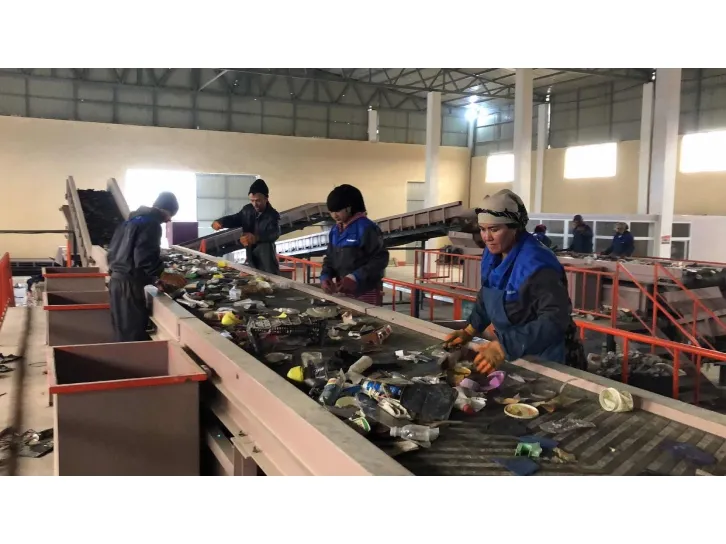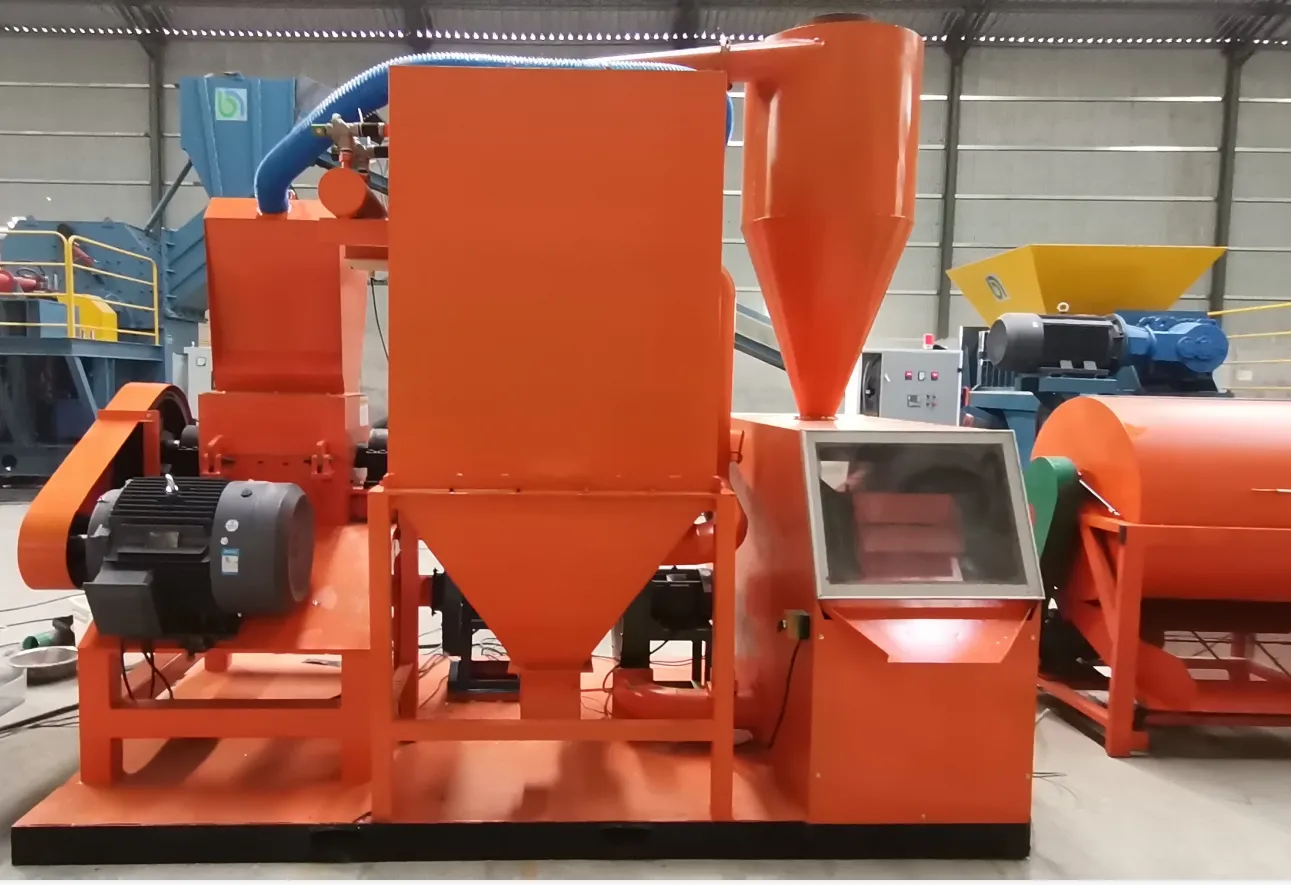

Лип . 04, 2025 10:05 Back to list

(scrap recycling plant)
The modern scrap recycling plant stands as a cornerstone in the movement toward circular economies and sustainable industrial ecosystems. As populations surge and urbanization accelerates, the efficient recovery and processing of metallic and non-metallic waste are no longer optional but essential. There are specific technological advancements and process management strategies that define the operational success of recycling plants—especially those tailored for steel and aluminium. This overview presents a comprehensive exploration of current trends, leading manufacturers, customization potential, and impactful case studies underpinning the global metal recycling industry.
The scrap recycling sector has witnessed exponential growth. According to the World Steel Association, approximately 630 million tonnes of steel scrap were recycled globally in 2023, accounting for nearly 30% of total steel production. The International Aluminium Institute states that over 75% of aluminium ever produced is still in use today, primarily thanks to intensive recycling through dedicated aluminium scrap recycling plants. Not only does recycling steel save up to 60-74% of energy compared to producing new steel from iron ore, aluminium recycling reduces energy usage by a staggering 95%. This massive energy conservation translates directly to greenhouse gas emission reductions, resource efficiency, and cost savings across multiple manufacturing sectors worldwide.
Innovative engineering has revolutionized the landscape of scrap recycling operations. In steel scrap recycling plants, the integration of high-capacity magnetic separators, sensor-based sorting systems, and induction heating has enhanced purity recovery rates to as high as 98%. Aluminium scrap recycling plants rely on advanced eddy current separators and automated material sorting lines—technologies that ensure the separation of alloys and coatings, reducing contamination.
Automation, digital monitoring, and predictive maintenance are enabling facilities to maximize uptime and minimize human error. Modern plants also employ dust collection systems and wastewater recycling modules, addressing environmental concerns associated with industrial-scale operations. The convergence of data-driven management and robust hardware ensures that contemporary recycling plants are as efficient as they are environmentally compliant.
Selecting the right partner is paramount to the success of any new scrap recycling plant. Industry leaders differ in technology offerings, after-sales support, customization options, and throughput capacities. Below is a comparative table of four leading manufacturers, highlighting their primary features:
| Manufacturer | Annual Capacity (tons/year) | Steel/Aluminium Support | Automation Level | Energy Efficiency | Customization Offered | After-Sales Support |
|---|---|---|---|---|---|---|
| EcoMet Solutions | 200,000 | Both | Advanced | High | Full | Global 24/7 |
| MetallRegen Engineering | 150,000 | Steel Only | Intermediate | Medium | Partial | Regional |
| AluGreen Tech | 100,000 | Aluminium Only | Advanced | Very High | Full | Global |
| RenewMet Systems | 180,000 | Both | Advanced | High | Full | Global |
From the comparison, manufacturers like EcoMet Solutions and RenewMet Systems provide integrated solutions for both steel and aluminium, prioritizing energy efficiency and comprehensive after-sales support. AluGreen Tech specializes solely in aluminium scrap, offering top-tier automation and customization for that sector. Such differentiation is critical when matching plant capabilities with feedstock and market demands.
No two recycling operations are exactly alike. Customized solutions are necessary to accommodate regional feedstock variance, local regulatory requirements, spatial constraints, and specific customer product outputs. In practice, effective customizations involve modular equipment assemblies, adjustable material handling capacities, and the integration of unique sorting or shredding technologies.
For example, in regions with significant alloyed ferrous scrap, high-grade sensor-based sorting modules can be prioritized. In areas where non-ferrous scrap is prevalent, melting technologies can be tailored to efficiently process mixed-metal streams. The digital backbone of a modern plant is also adaptable, with IoT integration and cloud-based monitoring scalable to sites of all sizes. Strategic automation investments deliver operational cost savings, real-time data analytics, and predictive maintenance, ensuring long-term plant performance.
Numerous plants worldwide exemplify the transformative potential of advanced recycling technology. One notable case is a steel scrap recycling plant commissioned in Germany in 2022, which achieved an annual throughput of over 150,000 tonnes while slashing energy consumption per ton by 65% compared to legacy systems.
Meanwhile, a leading aluminium scrap recycling plant in Canada integrated smart sorting and robotic handling, boosting recovered aluminium purity from 89% to 99.2% and improving operational uptime by 23%. In Southeast Asia, a multi-metal plant utilizing modular design expanded throughput by 30% within a year, catering to dynamic local market requirements without significant infrastructure overhauls.
These cases highlight not only the economic and environmental benefits but also the adaptability of modern plants to meet highly specific industrial and regional needs.
The trajectory of scrap recycling plant development is defined by unrelenting progress in process automation, data analytics, and resource optimization. By leveraging AI-driven sorting, real-time monitoring, and low-emission smelting innovations, the next generation of recycling operations will elevate material recovery rates while shrinking carbon footprints. Producers will also benefit from tailored plant solutions that respond rapidly to changing market demands and evolving environmental regulations.
In summary, investing in advanced steel and aluminium scrap recycling infrastructure isn’t just beneficial—it is imperative. As global industries strive for net-zero targets and resource efficiency, modern recycling plants stand poised as pivotal assets in forging a sustainable industrial future.

(scrap recycling plant)
Latest news
Troubleshooting Common Eddy Separator Problems
NewsJul.04,2025
The Role of Metal Recycling Plants in Circular Economy
NewsJul.04,2025
The Impact of Recycling Line Pickers on Waste Management Costs
NewsJul.04,2025
Safety Features Every Metal Shredder Should Have
NewsJul.04,2025
How Industrial Shredders Improve Waste Management Systems
NewsJul.04,2025
How Cable Granulators Contribute to Sustainable Recycling
NewsJul.04,2025